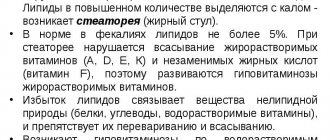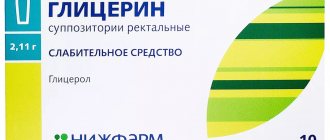02/14/2019 Alena Masheva Health
Rotavirus infection can occur in people of different ages. The causative agent of the disease is a virus from the rotavirus order. Compared to adults, children are more difficult to tolerate the disease. In addition to vomiting and diarrhea, the temperature may rise and your health may worsen. Therefore, it is important to know how to improve the condition. How long does a child have a fever with rotavirus and how to bring it down is described in the article below.
About the disease
The disease is also called intestinal flu or rotavirus gastroenteritis. This disease is young. It was discovered in the 1970s. Only a few years later it was discovered that the cause of the disease was rotavirus. Groups of this virus that can infect humans have now been studied.
The infection can be transmitted through water, food, and household contact. Children are more likely to suffer from the disease, but adults also become infected, and their disease occurs in a milder form. A person will be a carrier of the virus immediately after it enters the body. The incubation time is 2-5 days, it all depends on the body’s resistance.
The course of the disease usually lasts up to 7 days, and then some resistance to the virus serotype develops. It is difficult even for doctors to determine how long the disease will last, because its course is individual. Therefore, you need to know how to alleviate the condition.
Temperature for complications
If a lot of time has passed and the patient’s body temperature has risen and persists after rotavirus, a secondary bacterial infection has occurred.
- A complete blood count to detect signs of an inflammatory response.
- Sowing biological media to determine the pathogen.
- Determination of sensitivity to antimicrobial drugs.
The following can cause repeated fever and chills against the background of improvement after rotavirus infection:
- Escherichia coli is a facultative anaerobe found in the human body.
- Klebsiella infection.
- Staphylococcal infection.
- Proteus.
To prevent the development of secondary infection, the death temperature of E. coli is important.
How is it transmitted?
The virus spreads from sick people to healthy people. The main routes of spread include food and household (through hands). Children become infected when visiting a preschool institution, from sick parents, or peers. Since the disease significantly worsens the child’s well-being, it is necessary to get rid of it as quickly as possible.
The appearance of rotavirus infection may be associated with the consumption of infected products. This virus is common in dairy products and also thrives in the refrigerator. Therefore, during an outbreak of infection, the child should only be given boiled milk and should not consume yoghurt, cottage cheese, or kefir.
In addition to intestinal disorders, the virus can infect the respiratory tract. Infection occurs by sneezing. Entering the body, rotavirus leads to inflammation of the gastrointestinal tract. The mucosa of the small intestine is most affected. Digestion of food is disrupted, and the main symptoms of the disease appear. A child without fever may have rotavirus, but usually it still rises slightly.
How the infection spreads
The main source of transmission of infection is a sick person, who mainly excretes viruses in feces. It can pose a danger to healthy people throughout the period of symptoms and for another 10 days after illness. You can become infected through contact with a sick person and his personal belongings. Also, the source of influenza can be unwashed vegetables, poorly prepared food products (usually dairy products due to the specifics of their production process). Rotovirus tolerates cold well and can survive in the refrigerator for a long time.
Another route of transmission of infection is airborne droplets. Because the stomach flu is an inflammation of the airways, coughing spreads viruses through the air. The most susceptible to the disease are people with weak immunity, located in crowded places (office, school, kindergarten).
Not everyone knows how many days the incubation period can last. The first signs of the disease may appear even on the 5th day after the virus enters the body. The disease lasts a week, after which the person develops immunity, during which re-infection is practically not observed. The exception is the initially weakened immune system in adults and children.
Signs
The disease is divided into 3 stages:
- The incubation period is 1-5 days.
- Acute – from 3 to 8 days.
- Recovery – 3-5 days.
The incubation period has no manifestations. The child will be cheerful and active, but the virus is already in the intestines. Are there any signs of rotavirus in children? In the acute period, severe stool upset and vomiting are observed. How long does a child have a fever with rotavirus? It lasts up to 5 days.
The clinical manifestations of infection are almost the same. In the morning you may feel bad, there are sharp pains in the abdomen, and you refuse to eat. Vomiting also occurs when the stomach is empty. The child will be irritable, whiny, pale and thin.
Intestinal infection without fever
An intestinal infection almost always occurs with a rise in temperature. The patient may not notice this, because For some people, surges occur periodically. Also, the temperature sometimes rises only at the beginning of the disease. An alarming sign is when the thermometer first stopped at one elevated level, the indicator remained stable for some time, and then sharply went up. This indicates the development of complications.
But an intestinal infection can occur without fever. This occurs with very strong or, conversely, weak immunity or a small number of pathogens that have entered the intestines. The mere presence or absence of temperature does not mean anything.
Let us separately consider the following case - rotavirus infection without fever. It is also popularly called stomach flu, because... the disease is easily confused with a respiratory one. In this case, the first symptom is always an increase in body temperature to 38-39 degrees. Only after a few hours the patient is “covered” with gastrointestinal manifestations. Also, a characteristic sign of rotavirus infection is the presence of respiratory manifestations (runny nose, sore throat), although they do not accompany the pathology in 100% of cases.
Rotavirus infection without fever and even without other symptoms is possible when:
- the incubation period lasts (2-3 days);
- the patient has a weakened immune system;
- in adults with strong immunity, the disease does not even have a chance to cause diarrhea, not to mention fever;
- the disease is atypical;
- the person has previously been ill with rotavirus, so the new infection is erased.
Rotavirus infection occurs in acute form, as a rule, only in children who have not yet encountered it. In babies under one year old, it can cause rapid dehydration and death. Older children suffer from rotavirus more persistently, but also acutely. For adults, a mild course of the disease is typical.
Other symptoms
Infants may experience stomach turmoil. Then yellowish diarrhea appears. Vomiting becomes more frequent. With such symptoms, how long does the temperature last for rotavirus in a child? It lasts up to 5 days. What temperature occurs with rotavirus in children? An indicator of 38 degrees and above is a common occurrence with this disease.
High fever due to rotavirus in a child is persistent. It's hard to downgrade. With it, the body tries to eliminate the disease itself. The virus that led to intestinal infection dies when the temperature is 38 degrees.
There is no exact answer to how long the temperature lasts with rotovirus in a child and the disease itself. Each person has their own tolerance to the disease. Usually, with timely treatment, after 5-7 days the symptoms disappear and recovery occurs. After an infection, the child’s immunity is strengthened, so there will be no secondary infection.
Therapy for rotavirus infection
Rotavirus infection does not require specific treatment. The body itself will be able to cope with this pathology within 5-7 days. The main goal of therapy in this case is to try to relieve symptoms, support the body and normalize the functioning of the gastrointestinal tract after stressful situations.
To prevent dehydration during an infectious disease, you need to drink as much water as possible, about 2 liters per day. In order not to provoke vomiting by drinking too much, you need to give the patient 1 spoon every 5 minutes. If signs of dehydration have made themselves felt, solutions prepared on the basis of drugs such as Regidron or Citroglucosalan will help normalize the body’s electrolyte balance.
To reduce intoxication, sorbents are prescribed - activated carbon, Enterosgel, Sorbex.
Body temperature can be reduced by taking antipyretics. However, you need to take medications when the thermometer is 38 degrees or higher. Rotovirus dies at this temperature; if it is brought down at low levels, an environment will be created for its normal further reproduction).
If you have severe pain in the abdomen, you can take 1 tablet of no-shpa, as a rule, this is enough for the pain to go away.
To normalize the intestinal microflora, the patient is prescribed medications that contain enzymes (Linex). You should also adhere to a light diet based on chemical, thermal and mechanical sparing. Restorative therapy is carried out over 2-3 weeks.
You need to know that rotavirus infection cannot be treated with antibiotics; lipoferons, which have an antiviral effect, can be prescribed.
If treatment for intestinal flu begins in a timely manner, then in the near future you can expect a positive result and the disease will pass in the shortest possible time. If the infection starts, there is a risk of developing various complications.
First aid
There is no medicine that would destroy rotavirus infection. Therapy is symptomatic, eliminates the main symptoms, improves well-being, restores the activity of the gastrointestinal tract:
- During the first few days, normalization of the water-salt balance is required. With diarrhea, a large amount of fluid is lost, the intestinal walls will not absorb it, and dehydration may occur. Intake of water is a prerequisite for recovery. The child should be given food in small portions (no more than 50 ml at a time) so as not to lead to vomiting. Boiled water is suitable. And for older children, the Regidron solution is suitable.
- In newborns and infants, dehydration occurs quickly. It leads to serious consequences. If the illness occurs before one year, you should call a doctor.
- You should not force your child to eat food. During recovery, you should eat as much as you want, but in small portions. At the first signs of illness, dairy products are excluded from the menu.
- Whatever the age of the patient, you should call a doctor. The symptoms of rotavirus are similar to salmonellosis and cholera. The pediatrician will make an accurate diagnosis.
Timely assistance will help prevent complications. After a short time, you can notice an improvement in the child's condition. Better yet, take your baby to the doctor.
First aid for a patient with rotavirus
There is no specific drug that can quickly cure rotavirus infection. Therefore, treatment of this disease is only symptomatic, aimed at eliminating the main symptoms and alleviating the general condition of the sick person. First aid can be indicated by the following points:
- The patient is constantly given small portions of water. Getting fluid into the body is the key to a quick recovery. It must be remembered that with long-term loose stools and vomiting, dehydration may occur.
- A sick person is given adsorbents that are available in the house. These drugs absorb toxic substances and pathogenic microorganisms well, and then gently remove them naturally.
- If the body temperature is very elevated, then it is necessary to give an antipyretic drug. With rotavirus, it is very difficult to bring down the temperature, so paracetamol does not always help. In this case, it is better to give Nurofen in a therapeutic dosage that is appropriate for the age.
Regardless of the patient’s age, it is imperative to call a doctor, since the main symptoms of rotavirus are very similar to salmonellosis and dysentery. Only a qualified doctor can correctly diagnose and give important recommendations.
How to eliminate fever?
With rotovirus, a child’s temperature of 39 degrees may not drop for 3-7 days. It is impossible to determine exactly how long it will last. The condition depends on the ability to fight the virus and the time of initiation of therapy. Doctors advise lowering the fever at the following thermometer readings:
- 38 degrees – in newborns and infants;
- 39 – in older children.
Temperatures below these values eliminate the virus, therefore it is considered a protector of the body. The exception is children who have a history of convulsions during hyperthermia. They need to lower the temperature at 37.8-38 degrees.
How to deal with secondary infection
Vomiting and diarrhea due to rotavirus infection are observed in the acute period. The patient constantly feels sick and has the urge to defecate. The stools are watery, foam and mucus are observed in them, in addition, there may be bloody inclusions. An infectious bowel disease is characterized by a foul odor in the stool.
A high temperature in a child with rotavirus can last more than 5 days. The clinical picture of the disease in young children is almost always identical. From the very morning the baby becomes ill, he complains of a sharp pain in the abdomen, general malaise and poor appetite. The child becomes irritable, pale and whiny. If you listen, you can hear the bubbling in the baby’s tummy.
After this, diarrhea of a characteristic yellow color begins. Further, the urge to vomit becomes more frequent, pain in the stomach and abdomen worsens. By nightfall, the body temperature of a sick child reaches 39 degrees. Hyperthermia is quite stable. The temperature does not drop at all; sometimes you have to resort to intramuscular and intravenous injections to reduce it. With the help of high temperature, the body tries to independently cope with the pathogen, which dies already at 38 degrees.
It is difficult to say exactly how long a child’s temperature with rotavirus will last; in some cases, these indicators normalize within a day, and sometimes the painful condition lasts for several days. The faster the parents provided the child with the right help, the sooner he will recover.
The stage of recovery may be preceded by the stage of development of complications. This applies mainly to the severe course of the disease.
The duration of each period depends on the severity of the disease and the effectiveness of the prescribed treatment. The disease takes longer and is more severe in children under 2 years of age and elderly patients. Children are more susceptible to dehydration, and they are more likely to experience various complications.
The latent period of the disease lasts from one to 5 days. At this time, the rotovirus does not manifest itself in any way, people feel absolutely healthy, and lead their usual lifestyle at home. Nothing bothers him. Only towards the end of the incubation period do the first symptoms of the disease appear - weakness, lethargy, a slight increase in temperature, slight nausea.
From the moment of infection until final recovery (approximately 10–12 days), the person continues to be a carrier of rotavirus, and excretes it every time he goes to the toilet. After a rotavirus infection, a person who has recovered is contagious for several more days.
Most often, the infectious process ends with the patient’s complete recovery. The number of complications of the disease is associated with improper treatment, as a result of which bacteria can join viruses. When the body is dehydrated, problems with the functioning of the kidneys, heart, stomach and intestines can be determined. This must be given special attention and kept under constant control and observation.
Some time must pass until the intestinal microflora is restored. In addition, in those who have recovered from this disease, their overall immunity decreases. Therefore, in the first time after rotavirus infection, he remains too susceptible to any diseases. This is especially true for kids.
After suffering from the disease, you can become infected again and develop this disease. They get sick with rotavirus infection again and again when a person was able to become infected with another serotype of the virus. Not many recovered people can boast of lasting immunity against rotavirus.
Temperature drop
How to lower a child’s temperature with rotavirus? For children under 3 years of age, paracetamol or ibuprofen are suitable. It is preferable to choose syrup. Antipyretic suppositories are suitable for infants. For diarrhea, they will not be effective, since they are removed from the body before they begin to act. It is better to use candles during recovery, if the temperature has not yet dropped.
Older children are given Paracetamol, following the dosage. Doctors believe that this remedy is effective against rotavirus. It has a persistent, long-lasting effect, improving the child’s well-being for several hours.
Rubbing also helps. They need water and a soft towel. You need to wipe the baby's entire body. You cannot use alcohol, vodka or vinegar for these procedures. They can penetrate the body, leading to intoxication and worsening the condition.
What not to do if you have rotavirus
To prevent recovery from being delayed, it is very important to comply with certain conditions:
- The patient should not be forced to eat; he should eat only when he has an appetite. Portions should be small and consist of easily digestible foods.
- The patient should not limit drinking. To replenish lost fluid, the patient must drink frequently; the volume of drink should be at least 3 liters per day for an adult, and up to one and a half liters for a young child.
- It is strictly forbidden to give antibiotics, bactericides, antiemetics or antidiarrheal drugs without a doctor's prescription.
- It is strictly forbidden to leave a patient in the acute stage of the disease alone, even for a few minutes. A person may choke on vomit.
Every person has encountered rotavirus infections at least once in their life. This disease always occurs with a high temperature, which is difficult to control. The acute phase of the disease can last up to five days.
Rotavirus infection is an acute infectious disease characterized by several stages. The duration of its course differs in different patients. How long rotavirus infection lasts depends on the severity of the disease, correct and timely treatment. After the illness, the patient continues to feel weakness and indigestion for some time.
What is prohibited?
In order for recovery to occur as quickly as possible, simple conditions must be observed:
- A child should not be forced to eat. Let him do this when he has an appetite. Portions should be made small. Easily digestible foods are needed.
- Drinking restrictions are prohibited. To replenish lost fluid, the patient needs to drink frequently. Children are supposed to consume up to 1.5 liters per day. Adults need to drink at least 3 liters.
- Do not give antibiotics, bactericides, antiemetics or antidiarrheals unless they have been prescribed by a doctor.
- It is forbidden to leave a patient in the acute stage of illness alone, even for a few minutes. There is a risk that he may choke on vomit.
It is not uncommon to have a stomach ache after a rotavirus infection. In this case, “No-shpa” is taken in an age-specific dosage. Many people have experienced the disease at least once in their lives. This disease manifests itself in the form of a high temperature, which is difficult to bring down. The acute phase of the disease can last up to 5 days.
Since the disease has many unpleasant symptoms, it is better to consult a doctor about treatment. The specialist will prescribe effective means to improve the child’s condition.
Stages of the disease
High temperature due to rotavirus infection occurs in children from the first day. In total, doctors distinguish three stages of the disease:
- The incubation period can last from a day to a week. It all depends on the immune system. Most often, the incubation period is about 3 days;
- The acute period lasts from three to eight days. At this time, the patient’s condition is very poor, general weakness is felt, all symptoms are especially pronounced;
- The recovery period lasts up to 5 days. At this time, acute symptoms have already subsided. Appetite may be impaired and general weakness may be felt.
During the incubation period, a person does not yet feel signs of the disease, but the infection is already in the intestines. Without realizing it, a person is a carrier of bacilli.
Prevention
The main measure of protection against rotavirus is frequent hand washing. Children need to be taught this habit from childhood. This is done after visiting public places. You can take cleaning products with you. Children should drink only boiled milk and water. Fruits and vegetables should be washed thoroughly.
For lasting immunity, vaccines that include a weakened live virus are used. If other family members are sick, they should be isolated. Adults are more susceptible to infection. Children should not be put at risk. If a child continues to have a fever, vomiting, or diarrhea for several days, do not self-medicate. You need to call a doctor to clarify the diagnosis and prescribe the correct treatment, which will allow you to recover faster.
Source: fb.ru










